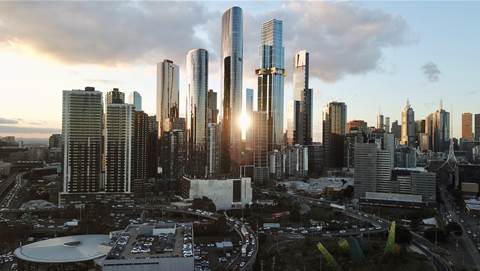The Australian government has amended telco regulations to enable an code to minimise radio-frequency interference between competing provider systems in copper wiring sheaths.

The technology is used for last-mile broadband delivery in NBN's fibre-to-the-node architecture.
Communications Minister Mitch Fifield's Telecommunications Amendment (Next-Generation Broadband Interference Management) Regulation 2015 arrived as a draft in July for consultation, and a final version was published last Friday.
The amendment calls for a telecommunications industry body or association to develop a code to help manage interference or crosstalk caused by VDSL services from competing broadband providers, delivered over copper wire pairs combined into a single sheath.
Such a code would be approved and enforced by the Australian Communications and Media Authority (ACMA), the government said. If telcos cannot agree on a code, ACMA would be tasked to create an industry standard.
Deemed a "next-generation broadband service" by the government, VDSL2 - which was finalised by the International Telecommunications Union in 2005 - can deliver up to 100 megabits per second data rates over short lengths of copper wiring, connected to fibre-fed nodes.
VDSL2 uses substantially more bandwidth than preceeding DSL technologies, which increases the risk of performance-hampering interference, with noise in the coper cable sheath drowning out the broadband signal.
Noise-cancelling technology called vectoring has been developed to deal with the cross-talk between the copper wires.
However, vectoring is controversial as all wire pairs in a cable sheath have to be controlled by the noise-cancelling electronics for the technology to work, raising competition issues.
In the explanatory notes for the amended regulation, the government said either a single provider must operate the vectoring technology, or multiple providers should cooperate.
Currently, interference between providers' cable systems are managed through voluntary, unenforceable codes developed by the Communications Alliance. These, however, are not sufficent for vectored VDSL2 and legislative changes are needed, the government said.
"Industry has advised the government that existing codes and standards do not address interference caused by next-generation DSL systems, such as VDSL2, in particular when those systems are used with vectoring," the amendment states.
"Industry further advises that these existing codes cannot be amended to manage interference caused by next-generation broadband systems without an initial change to the regulations."
Such broadband systems are being rolled out by NBN, TPG, LBN, Open Networks and iiNet, and the government said there was already anecdotal evidence the services are interfering with phone service and existing DSL broadband delivery.
Multi-dweller units (MDUs) are the most problematic for interference over copper, the government noted.
Providers who deliver VDSL2 from fibre node are also at greater risk of service performance degradation than those who use basement digital subscriber line access multiplexers (DSLAMs), which are physically closer to customers.
The government hopes the new code will make providers coordinate the spectrum bands used for VDSL2 and work together to minimise interference for service delivery.
The minister is expected to launch the amendment today.


















.png&h=141&w=208&c=1&s=1)

